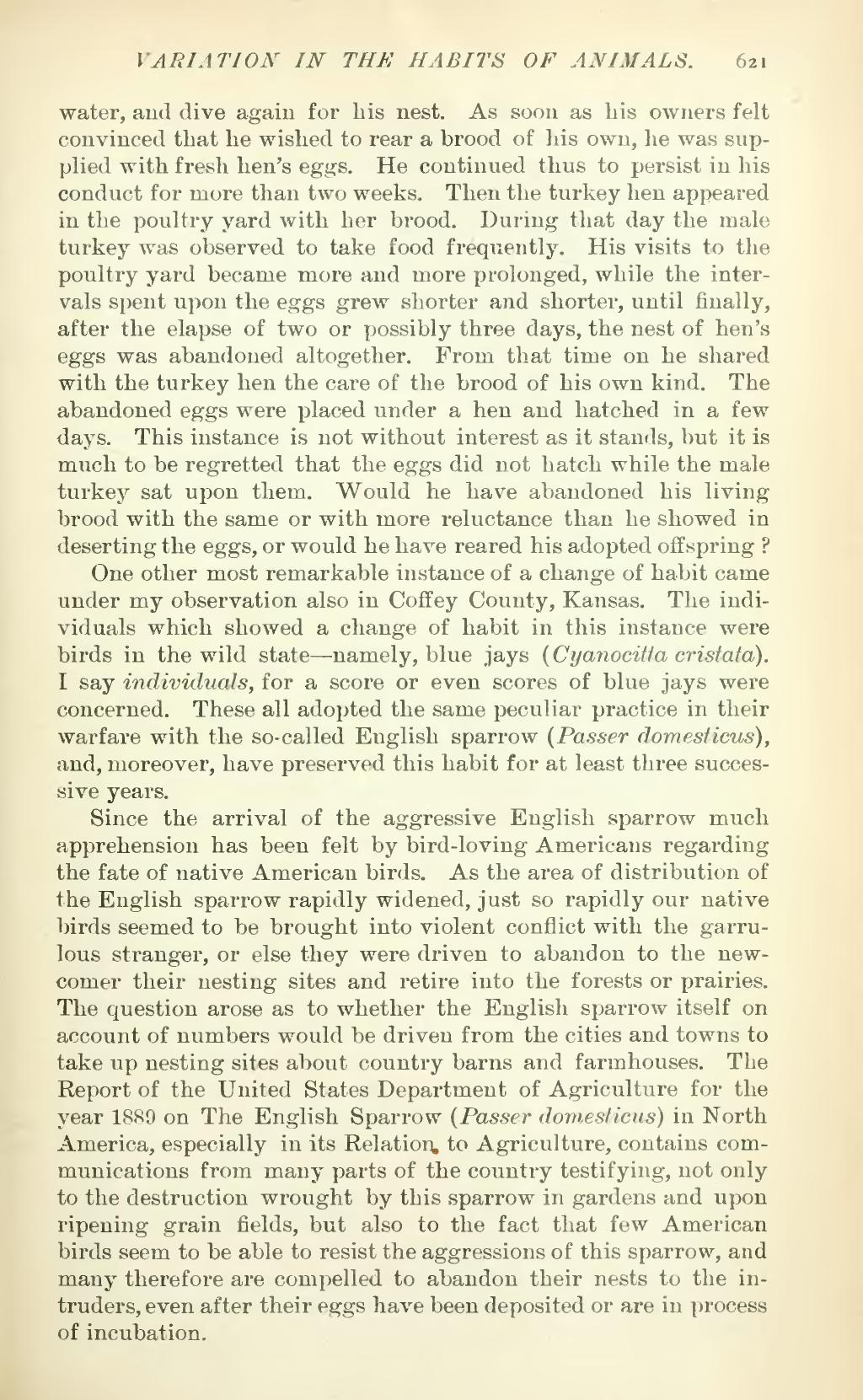water, and dive again for his nest. As soon as his owners felt convinced that he wished to rear a brood of his own, he was supplied with fresh hen's eggs. He continued thus to persist in his conduct for more than two weeks. Then the turkey hen appeared in the poultry yard with her brood. During that day the male turkey was observed to take food frequently. His visits to the poultry yard became more and more prolonged, while the intervals spent upon the eggs grew shorter and shorter, until finally, after the elapse of two or possibly three days, the nest of hen's eggs was abandoned altogether. From that time on he shared with the turkey hen the care of the brood of his own kind. The abandoned eggs were placed under a hen and hatched in a few days. This instance is not without interest as it stands, but it is much to be regretted that the eggs did not hatch while the male turkey sat upon them. Would he have abandoned his livingbrood with the same or with more reluctance than he showed in deserting the eggs, or would he have reared his adopted offspring?
One other most remarkable instance of a change of habit came under my observation also in Coffey County, Kansas. The individuals which showed a change of habit in this instance were birds in the wild state—namely, blue jays (Cyanocitta cristata). I say individuals, for a score or even scores of blue jays were concerned. These all adopted the same peculiar practice in their warfare with the so-called English sparrow (Passer domesticus), and, moreover, have preserved this habit for at least three successive years.
Since the arrival of the aggressive English sparrow much apprehension has been felt by bird-loving Americans regarding the fate of native American birds. As the area of distribution of the English sparrow rapidly widened, just so rapidly our native birds seemed to be brought into violent conflict with the garrulous stranger, or else they were driven to abandon to the newcomer their nesting sites and retire into the forests or prairies. The question arose as to whether the English sparrow itself on account of numbers would be driven from the cities and towns to take up nesting sites about country barns and farmhouses. The Report of the United States Department of Agriculture for the year 1889 on The English Sparrow (Passer domesticus) in North America, especially in its Relation to Agriculture, contains communications from many parts of the country testifying, not only to the destruction wrought by this sparrow in gardens and upon ripening grain fields, but also to the fact that few American birds seem to be able to resist the aggressions of this sparrow, and many therefore are compelled to abandon their nests to the intruders, even after their eggs have been deposited or are in process of incubation.
